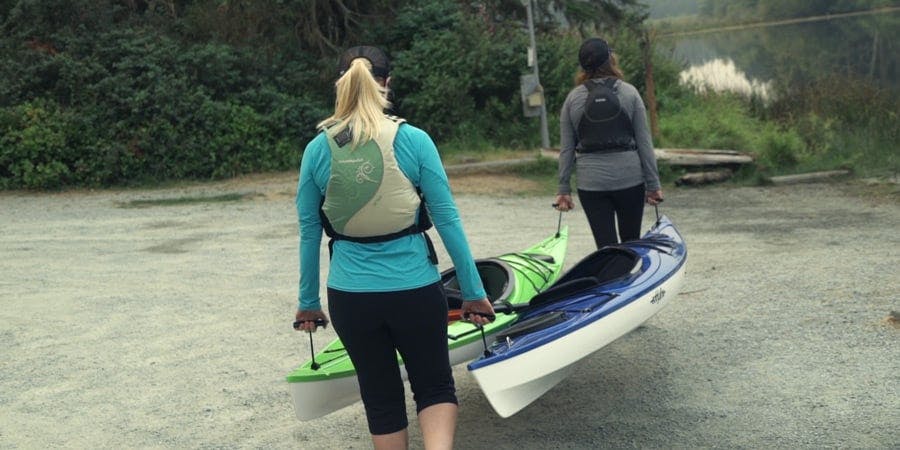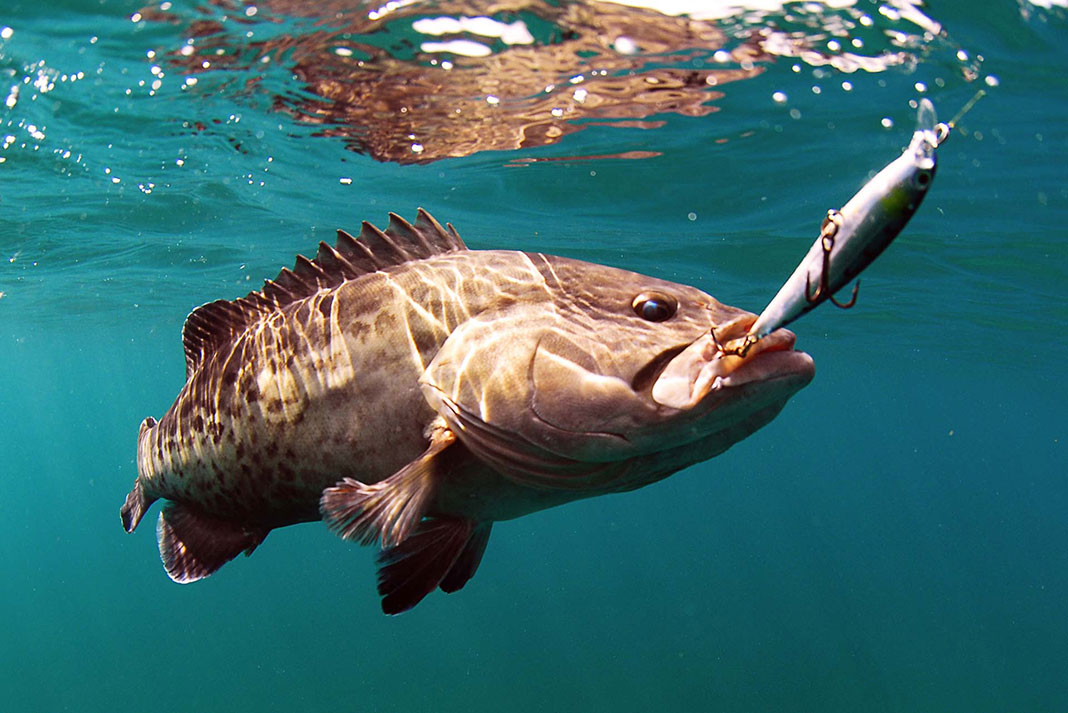
- Alabama
- Alaska
- Arizona
- Arkansas
- California
- Colorado
- Connecticut
- Delaware
- Florida
- Georgia
- Hawaii
- Idaho
- Illinois
- Indiana
- Iowa
- Kansas
- Kentucky
- Louisiana
- Maine
- Maryland
- Massachusetts
- Michigan
- Minnesota
- Mississippi
- Missouri
- Montana
- Nebraska
- Nevada
- New Hampshire
- New Jersey
- New Mexico
- New York
- North Carolina
- North Dakota
- Ohio
- Oklahoma
- Oregon
- Pennsylvania
- Rhode Island
- South Carolina
- South Dakota
- Tennessee
- Texas
- Utah
- Vermont
- Virginia
- Washington
- West Virginia
- Wisconsin
- Wyoming
Kayak on the Go: A Guide to Transporting Your Kayak (2026)
How To Transport A Kayak (Updated)
- 1 - How To Put A Kayak On A Car
- 2 - How To Transport A Kayak Without A Roof Racks
- 3 - How To Attach A Kayak To A Roof Rack
- 4 - How To Load A Kayak On A J-Rack By Yourself
- 5 - How To Strap Two Kayaks To A Roof Rack
- 6 - How To Load A Kayak In A Truck
- 7 - How To Lock A Kayak To A Roof Rack
- 8 - Are Our Bow And Stern Tie-Downs Necessary For Kayaks?
- 9 - Conclusion
Are you new to kayaking and wondering how to transport your kayak to your destination safely? Don't worry; we've got you covered!
Transporting a kayak can be tricky, especially if you don't have a roof rack. But fret not; there are alternative methods that you can use.
Did you know that transporting your kayak improperly can cause damage to your vehicle, your kayak, and even other road users? It's essential to consider the different transportation methods available to ensure you make the right decision.
The best and safest way to transport your kayak is by using a roof rack, which securely fastens it to the top of your vehicle. But, if you don't have a roof rack or don't want to install one, you can still transport your kayak in the bed of your truck, on a trailer, or even behind a bike.
Remember, taking the time to understand your kayak transport options will help you make an informed decision that ensures your kayak is transported safely and securely without any damage. So, happy paddling! 🚣♂️
How To Put A Kayak On A Car
To mount a kayak on top of a car, you can use a roof rack comprising crossbars, side rails, J-racks, roof saddles, roof pads, stacker racks, or even thick foam pieces and appropriate straps.
Transporting one or more kayaks can be challenging because they are built for water, not for the hard, flat roof of a vehicle. However, if you have the appropriate equipment and travel systems, transporting a boat on top of a car is not as difficult as it may appear.
Mounting a kayak on a car roof can be done in various ways, depending on the kayak you have, the type of car you're using, and any roof racks attached to the vehicle.
Having two people makes it easier to load a kayak on a car. You can lift the kayak onto the vehicle and securely tie it down for transportation.
Loading a kayak onto a car can be more challenging if you don't have an extra set of hands, particularly if it's bulky or lengthy. One technique is to balance one end of the kayak on the car, either on the side or back, and then push it up onto the roof of the car.
Once the kayak is on the car, you'll need to turn it until it's parallel to the roof and then push it up. To keep the boat from sliding off, securely tie it to the vehicle once it's in place.
There are several ways to attach a kayak to the roof of a car or any other vehicle. Here are some tips and techniques that can make loading one or more kayaks onto a car or into a truck, securing kayaks for transport, and loading kayaks into a vehicle more manageable.
Related How to secure kayak to roof rack
Kayak Transport
Transporting a kayak is not overly challenging; however, you must load your boat onto your car correctly to keep it safe while in transit. You will acquire the knowledge necessary to:
- When transporting a kayak with two persons, each person should grip a grab handle while the other person raises it. If you paddle the kayak alone, you can carry it on your shoulder.The simplest method is having a friend assist you in loading a kayak onto a vehicle. You will move the boat onto the rack by picking it up at either end and placing it there. If you're performing by yourself, there are a few different possibilities based on your rack system.When it comes to securing a kayak, the use of cam straps is the method that is both the easiest and the quickest.
How To Transport A Kayak Without A Roof Racks
Finding the best way to transport a kayak can be challenging without roof racks. The following tips will help you transport a kayak without a roof rack, whether renting a kayak and a car or borrowing a car without roof racks.
Using thick foam or sponge pieces or pads, ropes, ratchet straps or cam straps, and some mat or blanket will help secure your kayak without roof racks.
This kayak transport method requires at least two foam or sponge pads. Put two foam pads on the vehicle's roof you intend to use. When the places are tall enough, the bottom of the kayak should not contact the top.
Directly above the front and rear windscreens, place the foam pads at the rear and front edges of the car's roof. Because these are the best locations, the top supports in the vehicle will provide the most support beneath the boat.
After sliding the vessel onto the car's roof, the next step is to secure it. The kayak can easily be slid if the vehicle is protected with a rug or blanket.
Secure the kayak to the vehicle using your ratchet straps, cam straps, and sturdy ropes once the boat is safely on top of the foam pads. Using the car's interior, tie the kayak to the roof by looping straps around the kayak and the roof. To ensure extra stability, tie the kayak's bow to the towing eye at the front of the car with a rope.
How To Attach A Kayak To A Roof Rack
Transporting a kayak or canoe to and from the water requires a reliable method. As a severe paddler, it's essential to consider this when buying a vehicle. While it's possible to fit roof racks to any car, truck, or SUV, some manufacturers make it easier. This step-by-step guide will explain how to secure a kayak or canoe to a factory-installed or aftermarket roof rack. If you're unsure about any steps, always refer to the instruction manual with your car or roof rack.
Step 1: Lay the kayak straps over the bars of the roof rack
Start by laying the straps over each bar of the roof rack, being careful not to scratch your car's door with the buckles on the end of the straps. Thread each strap underneath and around each bar, allowing the kayak straps to lay flat against your vehicle. Rest the clamped end against the window and let the non-metal end hang along the car's body to prevent damaging the car's paint. Check the crossbars of the kayak rack and tighten them if necessary. Most racks only require an Allen wrench to tighten.
Step 2: Place your kayak or canoe on the roof rack.
If you plan to tie your kayak directly to the roof rack's crossbars, place the boat upside down on the rack. Placing a plastic boat hull-side down can cause indentations affecting the boat's ability to track straight. If you're using kayak carrier pads or special attachments like hooks or rollers on the roof rack, you can place the kayak right-side-up. Depending on the kayak type, facing the front or rear may be better. Sea kayaks are more aerodynamic from the bow, while recreational kayaks are less defined from front to back, so you can go either way. When placing a canoe on a roof rack, center it on the crossbars for even weight distribution.
Step 3: Bring the canoe straps over the canoe.
After placing the boat on the roof and the straps around the bars, pull the straps over the canoe or kayak to the other side of the roof rack to avoid damaging the car or even breaking a window. This step can be challenging for large canoes, but it's worth the extra effort to do it correctly. Pull on the buckle end and walk it around the end of the vehicle and over the boat. Let this end hang freely while you pull on the other end to get more length, then toss the non-metal end over the boat. The trick is to get the straps over the canoe without damaging anything.
Step 4: Secure the kayak straps.
Once the kayak is on the roof rack and the straps are lying over it, it's time to strap it down. Make sure the straps are lying flat against the kayak and not crossed. Slide each strap so that the buckle lays against the kayak's hull. Bring the other end underneath the crossbar and back up to meet the clip. Thread the kayak strap up through the buckle by pushing the button on the clamp and opening a slot for the strap to fit through. Finally, pull the straps to take up the slack. Tighten the belts to ensure the kayak is secure. If you leave the kayak on the roof overnight, loosen the straps to reduce pressure and prevent damage.
Step 5: Roll and tie the kayak straps up.
To prevent kayak straps from flapping in the wind and damaging your car, wrap each strap around the part of the roof rack that attaches to the car. Take the end of the belt and knot it against the rest of the straps, or wedge it under them. Once you've done this, your kayak should be secure, and you're ready to
How To Load A Kayak On A J-Rack By Yourself
A roof rack with J-racks allows you to transport a kayak safely and store two kayaks simultaneously on the same shelf.
Securing a kayak to a J-rack is similar to using a roof rack. Place the kayak on its side in the J-rack and ensure it is centered.
Secure the kayak to the rack by running cam straps, ratchet straps, or rope through the top hoop of one of the J-racks, crossing both ends of the belt or rope over the kayak, and securing the strap or string to the roof rack after passing it through the opposite hoop on the J-rack.
Repetition of this process will help maintain the kayak's lateral stability. Attach an S-hook or a tight knot to each vehicle's towing eyes to secure the kayak further.
Attach the other end of each rope or strap to the bow and stern of the kayak, respectively, and secure tightly.
Using a J-rack to hold your kayak in place will prevent it from moving, and ropes or straps that are tightly secured will ensure that your kayak will not shift during transport.
Loading A Kayak By Yourself
Certain people have the strength and height to hoist a kayak onto their car by themselves, but if you are not one of those people, the following are some guidelines for loading a kayak by yourself:
- Use a lift system. There are kayak racks with built-in lift systems that make it easier to load the kayak. Most of the time, they slide down from the roof of your car to the side, making it easier to move your kayak up and down. When the boat is properly loaded and secured, you will raise the rack system to its highest position on top of your car. These racks come cheaply, but they do their job well.
- Get rolling wheels: a second possible alternative is to utilize a rack designed with rolling wheels built in. These make it possible for you to easily place the bow of the boat into the cradle of the rear rack, pick up the stern end of the kayak and roll it forward into the cradle of the front frame. These can be purchased for a lower price than racks that have lift systems integrated into them.
- Use a towel or a blanket: If you are looking for a low-tech and low-cost solution, consider placing a towel or a blanket on top of the back of your vehicle and then setting the boat's bow on top of the towel or the mantle. Take hold of the boat's stern, then use your momentum to haul it up onto the rack from the stern.
Loading Multiple Kayaks
Transporting more than one kayak on top of your car is feasible if they have sufficient room. (Important: Make sure you have good straps.) The following are some suggestions for transporting multiple boats:
- Install a second rack: Depending on the width of your boats and your crossbars, you may be able to transport a double kayak in the same manner as the first one if you install a second rack on the crossbars. This, however, will be determined by the fact that you have already transported the first kayak.
- Utilize stacker bars if you attempt to stack two, three, or even more boats on top of one another. Stacker bars could be the solution to your problem. Because of this, you can store the boats more compactly by turning them on their sides. Stacker bars are most commonly employed with whitewater kayaks that are lighter and shorter in length. However, these bars can also be utilized for leisure and touring boats.
How To Strap Two Kayaks To A Roof Rack
One kayak is already a challenge on a roof rack, but moving two kayaks simultaneously is often unavoidable. A roof rack can transport two kayaks quite quickly, and let's see how it's done.
When you have two kayaks to strap onto a roof rack, you usually have the other paddler to help you. Thanks to this, we can drastically reduce the time it takes to complete this process.
A kayak stacker or J-rack attachment for roof racks is the best option for transporting two kayaks simultaneously. Two kayaks on a roof rack are dangerous without these attachments.
Load a kayak onto the car's roof and assess how much space it has. Two kayaks can be stacked in some vehicles, but others must be placed on their sides, while others must be secured flat on one side and the other.
Kayaks will fit securely on their sides if the roof rack has J-racks or a stacker. Secure both kayaks to their respective frames and the towing eyes of the car with their separate ropes.
The kayaks must be secured individually to the rack if these rack attachments are not available. Using the methods above, bar the first kayak onto the roof rack after assessing the open space. One kayak should be placed flat and one on its side.
As soon as the first kayak is mounted, preferably flat on the roof rack, the second can be mounted on its side, securing both kayaks to the rack. Attach the flat kayak to the roof rack with ropes or straps as a stabilizer for the side-mounted kayak.
Once the kayak is secure, tie it together using ropes at their respective handles or eyelets. Always tie both kayaks to anchor points at the front and rear of the car or vehicle once they have been secured to prevent them from sliding off the roof. The best option is to use towing eyes.
How To Load A Kayak In A Truck
Transporting a kayak safely involves loading it into the bed of a truck. The procedure, however, involves several critical aspects that must be considered.
Loading a kayak into a truck without additional racks or bed extenders is only possible if the truck's bed is long enough to accommodate it. Truck beds can be fitted with shorted kayaks by lifting the tailgate and tightly securing the truck bed's anchor points.
A truck bed extender designed explicitly for kayak transportation is available if the kayak is too long for this method. These racks and extenders mount to the vehicle's underside and provide a platform on which the kayak can be mounted flat without being raised.
Either way, tying the kayak down with straps and ropes is accessible after it has been loaded into the truck, whether inside the bed, on the tailgate, or an extender. Make sure the kayak can't shift or slide while being transported.
How To Lock A Kayak To A Roof Rack
When a kayak is locked onto a roof rack, it is essential to prevent theft during a rest stop and add an extra layer of security to the fastenings.
Rope, chain, and bicycle locks can secure a kayak to roof racks, but a chain and an anti-pick lock is the best option.
Place the chain through a body hole in the kayak, such as a handle, and loop the other end through a vital roof rack section.
Keeping your kayak secure while away is as simple as locking the chain with an anti-pick lock.
Are Our Bow And Stern Tie-Downs Necessary For Kayaks?
Securing the kayak in two directions is essential when tying it to roof racks or mounting systems.
When transporting them, securing kayaks to their stern and bow is essential. When ropes and regular straps work and specialized tie-downs, they are not necessary.
Kayaks may be held securely by attaching ropes or straps to the front and back ends of the roof racks or towing eyes at the front and back of the vehicle.
To prevent the kayak from breaking, permanently attach ropes or straps to secure solid mounting pins on the bow and stern of the boat.
Conclusion
The responsibility of transporting a kayak is part of owning one. Getting a boat on the water is necessary for anyone who enjoys boating.
Kayaks should be secured to a truck or car with a roof rack system to ensure they are transported safely and not damaged in transit. If you book your kayak correctly to your vehicle, regardless of how you mount it, you should arrive safely without causing any damage to it.
Frequently Asked Questions
How best to transport a kayak? Upside down or upside down?
Stackers can safely transport rotomolded kayaks on their edges or upside down (hull up). Composite kayaks should always be transported on their bottoms using crates to prevent deformation.
Can you carry a kayak easily?
When transporting a kayak, it's essential to make sure your kayak is loaded correctly onto your vehicle to ensure its safety. You will learn to lift a kayak with two people by holding grab handles.
Can you drag a kayak?
It's usually possible to drag a heavy plastic kayak. While this option may be suitable for transporting your kayak on grass or sand, it may not be suitable for specific terrain. You should also avoid dragging light kayaks, such as fiberglass or composite kayaks, as they can be damaged.











